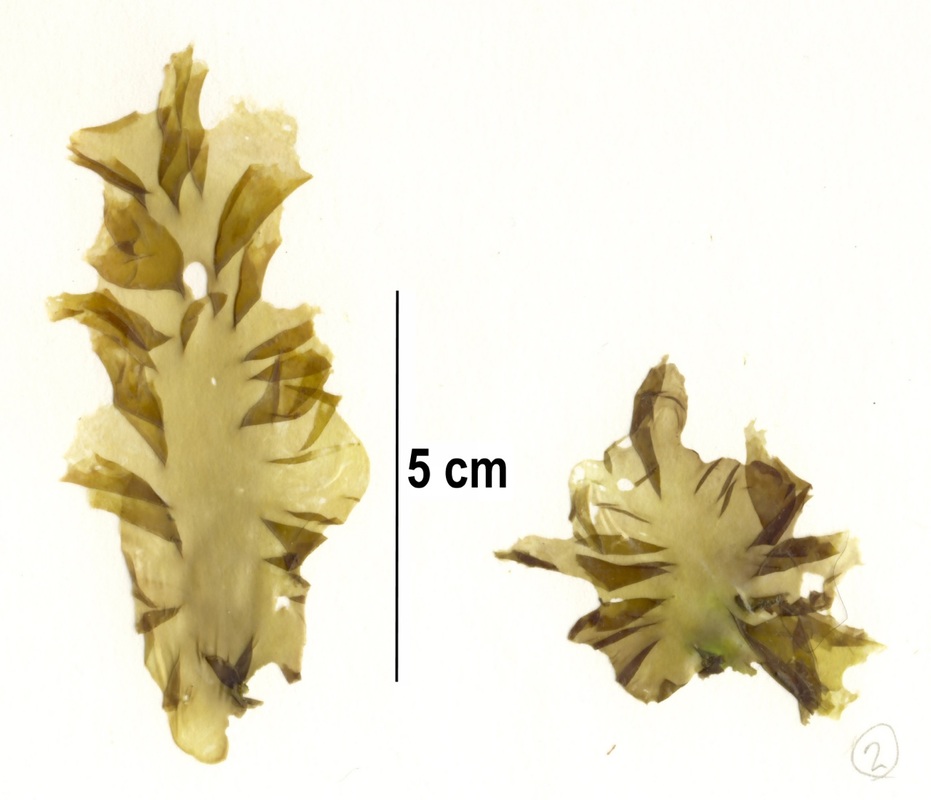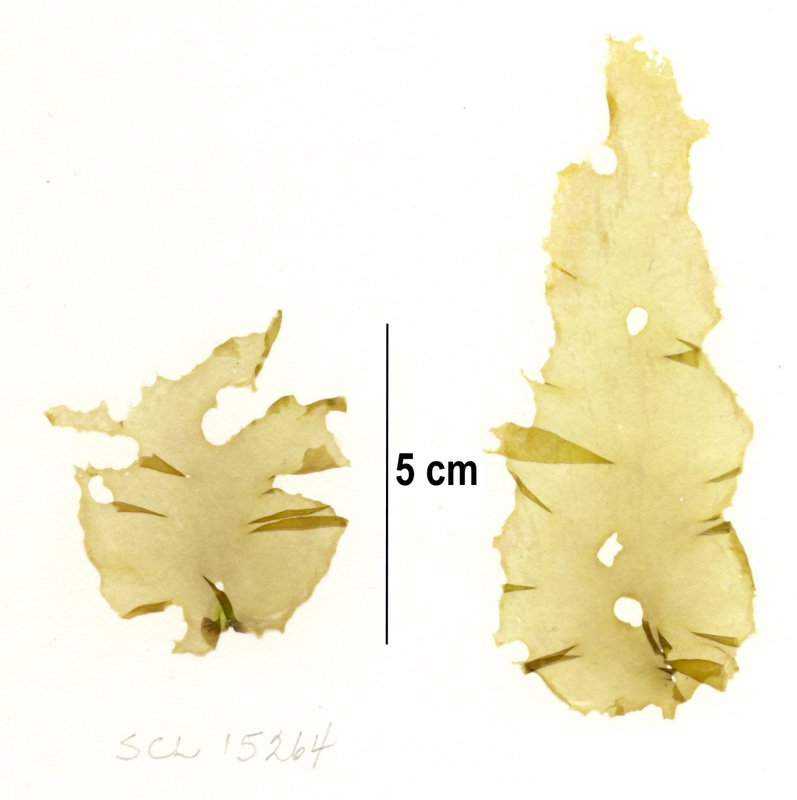False laver • Pyropia fallax
Specimen collection numbers SCL 15263 and SCL 15264 in the UBC Herbarium Algae Database. Search the collection numbers in the database for more information on these specimens, or search the species for further occurrences. Images courtesy of Sandra Lindstrom.
Identification
This common red seaweed can be identified by its red-brown thallus that can reach 50 cm in length. The pigmentation subtly fades to green towards the center of the thallus. Like other members of the genus Pyropia, blades of this species are one cell layer thick. Female reproductive cells are located along the margins of ruffled blades, and are pale red when fertilized. Male reproductive structures are found in white patches, or in streaks the extend throughout the blade.
Habitat and Range
This species can be found from the high to lower-mid intertidal zone, and typically grows on rocks on both protected and exposed shorelines. Its range extends from the Aleutian Islands to northern Washington. The specimens pictured above were collected on boulders in the high intertidal zone on Boulder Beach, Calvert Island.
Similar Species
Black seaweed (Pyropia abbottiae) is quite similar in appearance, but is differentiated by its darker red margins (female reproductive cells).
Human Uses
Like many other members of the genus Pyropia, this species is edible, highly nutritious, and continues to be an important food source for many Coastal First Nations Peoples.
This common red seaweed can be identified by its red-brown thallus that can reach 50 cm in length. The pigmentation subtly fades to green towards the center of the thallus. Like other members of the genus Pyropia, blades of this species are one cell layer thick. Female reproductive cells are located along the margins of ruffled blades, and are pale red when fertilized. Male reproductive structures are found in white patches, or in streaks the extend throughout the blade.
Habitat and Range
This species can be found from the high to lower-mid intertidal zone, and typically grows on rocks on both protected and exposed shorelines. Its range extends from the Aleutian Islands to northern Washington. The specimens pictured above were collected on boulders in the high intertidal zone on Boulder Beach, Calvert Island.
Similar Species
Black seaweed (Pyropia abbottiae) is quite similar in appearance, but is differentiated by its darker red margins (female reproductive cells).
Human Uses
Like many other members of the genus Pyropia, this species is edible, highly nutritious, and continues to be an important food source for many Coastal First Nations Peoples.
References
Lindberg, M. and Lindstrom, S. (2010). Porphyra fallax. Seaweeds of Alaska. Accessed 2015-04-05.
Turner, Nancy J. "The ethnobotany of edible seaweed (Porphyra abbottae and related species; Rhodophyta: Bangiales) and its use by First Nations on the Pacific Coast of Canada." Canadian Journal of Botany 81.4 (2003): 283-293.
Authors and editors of page
Bea Proudfoot (2016).
Lindberg, M. and Lindstrom, S. (2010). Porphyra fallax. Seaweeds of Alaska. Accessed 2015-04-05.
Turner, Nancy J. "The ethnobotany of edible seaweed (Porphyra abbottae and related species; Rhodophyta: Bangiales) and its use by First Nations on the Pacific Coast of Canada." Canadian Journal of Botany 81.4 (2003): 283-293.
Authors and editors of page
Bea Proudfoot (2016).






